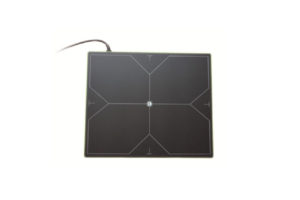In digital films, the conversion of X-ray energy into electrical signals is achieved through a flat panel detector, so the characteristics of the flat panel detector will have a relatively large impact on the image quality of DR.The selection of DR must take into account the selection of the plate detector.The performance index of flat panel detector will have great influence on the image, so the hospital should choose a suitable flat panel detector according to the actual needs.
DR flat plate detector can be divided into two types: amorphous selenium flat plate detector and amorphous silicon flat plate detector. From the perspective of energy conversion mode, the former belongs to direct conversion flat plate detector, while the latter belongs to indirect conversion flat plate detector.
The amorphous Selenium plate detector is mainly composed of amorphous selenium layer TFT.The incident X-ray causes the selenium layer to generate electron hole pairs. Under the action of an applied bias electric field, the electrons and hole pairs move in opposite directions to form a current, which forms a storage charge in the thin-film transistor.The amount of charge stored in each transistor corresponds to the dose of the incident X-ray, and the amount of charge at each point can be known by reading out the circuit, and thus the X-ray dose at each point.Since amorphous selenium does not produce visible light and does not have the influence of scatterers, a relatively high spatial resolution can be obtained.

Author:Lillian
Tel:+86 18953679166
Email:service@newheek.com
Company:Weifang Newheek Electronic Tech Co., Ltd.